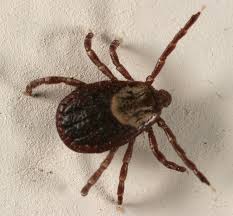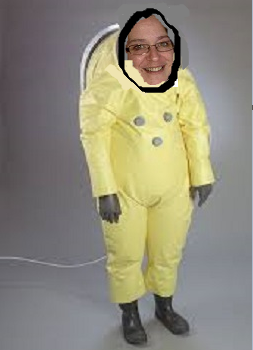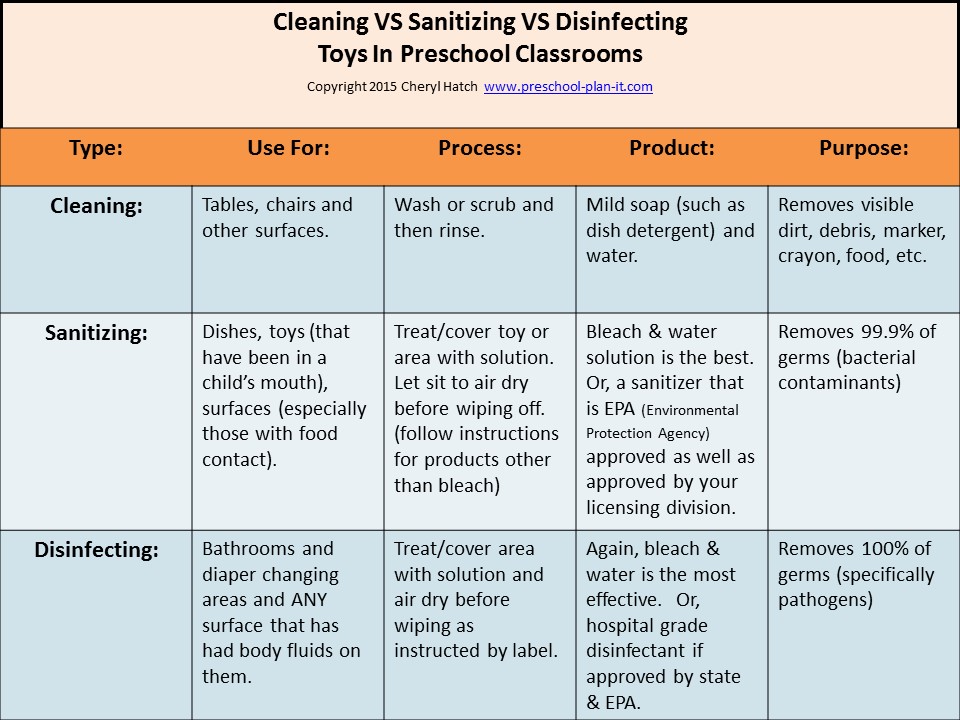- Theme Packs
- Themes
-
Preschool Planning
- Preschool Teachers
Tick's the Season: Checking for Ticks in Preschool

Checking for ticks becomes a transitional activity for teachers in preschool programs in Spring and Fall.
Those nasty ticks come around every Spring and can be even worse in the fall.
Here you'll find ways to prevent your preschoolers from being bitten by these annoying little critters.
The weather has been so beautiful. I love to walk when it is nice out. So does our dog.
As we were walking, he "stopped to smell the roses" and it looked as though there was dirt on his nose.
I bent over to wipe it off and EEK! Three ticks had decided to grab a free ride on Jack's nose.
Fortunately, they were still just looking for a seat and were not attached.
I went home and immediately began checking for ticks on myself as well as my dog and ...yup...there was one crawling on my neck (but no more on JackJack!)
Okay, who else is now itchy just from reading this? You're welcome!
My first thought is I need to invest in some heavy-duty outerwear before my next walk.
But instead, I decided to do some research and make a few calls. So before you go out and purchase similar gear, let's learn more about ticks!
What is a tick?Did you know that ticks are in the aracnid family? Me either! They are relatives to all kinds of creepy crawlies that I equally dislike including spiders, mites and scorpions!
There are literally hundreds of different kinds of ticks around the globe. There are two kinds in particular that we talk most about: The dog tick and the deer tick.
The Dog Tick
Dog ticks are very common and are larger than the deer tick. They can be anywhere up to ½ inch long.
If you have ever had a dog, you have most likely seen a dog tick either walking on it's coat/fur (as I saw with Jack) or actually embedded in your dog's skin (as I have also seen with Jack).
These are the less concerning of ticks, though they can carry a disease called Rocky Mountain spotted fever.
The Deer Tick
A deer tick is much smaller than a dog tick. It is about the same size as the head of a pin! That is tiny! These ticks are found in many areas of the United States
This is the more concernable of ticks as this type can carry Lyme disease, especially in New England and some parts of the Midwest United States.
What makes a tick......well, tick?
A tick attaches itself to the skin of its host (an animal or a person) and sucks blood. That's their goal. That's their agenda in life. Gross, right?
TICK FACTS:
Ticks do NOT jump. They do NOT fly. They do NOT fall off of trees and bushes.It is thought that ticks typically attach to the lower legs of people (or in my Jack's case, anywhere on his body, being a "lowrider" short corgi dog) and then crawl their way up their hosts body looking for a nice, warm, untreated place to feast.
Why so many ticks some years?
Research shows that their is a higher number of ticks during heavy wet seasons and high rainfall seasons.
This means in Spring, when all the snow melts and the spring rains come, ticks are pretty much everywhere. It's especially high in Spring when the preceding Winter resulted in record snow fall.
The melting snow just adds to the water accumulation. Put water and warm weather together, and you've got Spring Break for Ticks!
I spoke with a representative of Bayer Healthcare LLC.
Their Animal Health Division manufactures K9 Advantix II, the tick, flea and mosquito treatment we use on our dog.
DID YOU KNOW?
Lyme disease gets its name from the place where it was first discovered —
Lyme, Connecticut (in New England)?She confirmed that awhen spring comes after a snowy winter, the number of ticks is higher.
I was told by Jack's veterinarian's office that the Fall/Autumn season has an even higher concentration of ticks!
Why? Ticks don't like the hot (summer) weather so they are less active then and doing their thing.....laying larvae.....and when the weather is warm again (as fall approaches) and the fall rains come, ticks return in droves!
How to prevent them
Well, we can't prevent ticks from exisiting, though that would be a wonderful and noble goal! What we can do is take steps to lesson our exposure to them.
Avoiding Ticks In Your Outdoor Areas
Here are some suggestions that I found in my research:
- Keep grass mowed/cut.
- Clean up grass and leaf piles, including around your woodpiles, fences and gardens. Not only to ticks live there, but these areas provide a place for rodents (mice, chipmunks, etc) to live--and ticks have access to these lower to the ground hosts!
- Remove any plants or items that attract deer.
- When going on walks, avoid areas with tall grass and bushy areas.
- If on a nature trail, walk in the center of the path, not the edges where the tall grass/brush is.
- If you have deer in your area, consider some type of deer fencing or other barrier to keep them out of your outdoor, common use area.
- Consider treating your area for ticks. I am told there are non-chemical and envirnomentally safe treatments. Your areas cooperative extensions or local nurseries may be able to guide you in this area.
The CDC has many ideas. In addition, the Connecticut Agricultural Experiment Station has developed a comprehensive Tick Management Handbook also have suggestions for preventing tick bites as well as suggestions to reduce tick population in your common areas such as:
- Place a 3-ft wide barrier of wood chips or gravel between lawns and wooded areas to restrict tick migration into recreational areas.
- Mow the lawn frequently.
- Stack wood neatly and in a dry area (discourages rodents).
- Keep playground equipment, decks, and patios away from yard edges and trees.
- Discourage unwelcome animals (such as deer, raccoons, and stray dogs) from entering your yard by constructing fences.
- Remove old furniture, mattresses, or trash from the yard that may give ticks a place to hide.
DID YOU KNOW?
Opossums, (sometimes incorrectly referred to just as possums), eat ticks?
You'll want to stay away from opossums but know that they are helping reduce your area's tick population!
Study on this fact found here.
And video from PBS found here!Thanks Shannon K. for letting me know about this fact!
Avoiding Ticks on Pets
Dogs (and cats) seem to be natural hosts for ticks due to their low proximity to where ticks live..
Be sure to bathe your dog with tick shampoo or consider a tick collar or topical treatment.
Check with your veterinarian for guidance.
Avoiding Ticks on People
When playing outside in grassy and especially in wooded areas, WebMD http://www.webmd.com/first-aid/tc/how-to-remove-a-tick-overview recommends the following:
- Wear long-sleeved shirts
- Wear long pants (preferably tuck pants into socks so as not to leave skin exposed).
- Wear a hat
- Wear light colored clothes (ticks are easier to find on light clothing rather than dark clothing)
- Use insect repllents, such as products with DEET.
A Note About DEET
According to the information from the State of Connecticut DEET has been used by many millions of Americans for 40 years and the incidence of adverse reactions is low.
The Environmental Protection Agency's (EPA) review of DEET showed that normal use of DEET does not present a health concern to the general population when used according to label directions
Some allergic, toxic, and neurological reactions to DEET have been reported in medical literature, but toxic encephalopathic reactions are rare.
Reported adverse reactions appear to have involved high concentrations of DEET, over application of product contrary to label directions, or ingestion of product. Repeated applications have occasionally produced tingling, mild irritation or contact dermatitis.
They further state that the important points in the safe use of DEET include:
- Follow the directions and precautions given on the repellent label.
- pply DEET sparingly to exposed skin, and spray on clothing when possible.
- Do not use DEET under clothing or over cuts, wounds, or irritated skin.
- Use the lowest concentration necessary for protection and estimated time of needed protection.
- Minimize the use of higher concentrations on the skin. Lower concentrations, such as 10% DEET, will provide approximately 2 hours of protection against mosquitoes (but may be less effective against ticks), while a concentration of 24% will provide about 5 hours of protection against mosquitoes.
- A concentration of DEET up to 30% for adults and children over 2 years of age is the maximum concentration currently recommended by the American Academy of Pediatrics (AAP).
- The AAP does not recommend the use of DEET on children under 2 months of age.
- Apply sparingly to small children.
SAY WHAT?
That's a lot of DEET information. What I was surprised to read was the it should not be applied under clothing.
My thoughts and suggestions for you regarding products with DEET:
You should ALWAYS check with your doctor or child's pediatrician before using anything with DEET in it.
You should NEVER apply products with DEET in it without express, written permission by parents.
How to perform tick checks.
Checking for ticks must become a routine, just part of what you do after playing outside, each and every time during tick season.
Plan for it. Treat it as any other expected transition in the classroom.
- Start at the head, checking the scalp and back of the neck.
- Move your way down from there checking:
- Behind and in the ears
- Back and front of neck
- Armpits
- Backs, Bellys and Belly-Buttons
- Back of Knees, ankles, feet.
Teach children what ticks look like and how to check their own bodies as well.
Send home a letter to parents about checking for ticks at bath time as well.
Checking for Ticks...and then you FIND ONE!
You hope this won't happen, but in reality, it most likely will. You'll find one and need to remove it.
First, let's talk about what NOT to do:
- Do NOT cover the tick with petroleum jelly (vaseline).
- Do NOT cover the tick with fingernail polish.
- Do NOT cover the tick with gasoline or rubbing alchol.
- Do NOT try to smother or burn a tick.
Any of these things could, and most likely will, cause the tick to release fluid from their bodies (which may be infected) into the person's body and therefore increase the risk of infection.
Removing a Tick
1. Use tweezers, gloves or a tick-removal device.
If you don't have tweezers, you can put on gloves or otherwise cover your hands and use your fingers. It is not recommended to use bare hands.
There are also "thing-ys" for lack of a better word. I guess "device" is better! I got one years ago from my vet's office and it works perfectly..on pets AND people!!
It is like a 1/8 teaspoon size and has a small wedge in it.
You place the wedge part against the skin and lift.
The tick comes out and falls into the spoon part.
Easy-peasy!
I know that sounded like an ad, but they aren't kidding that it is the "world's easiest tick remover"! I like this soooo much better than tweezers!
2. Grab the tick.
Grab the tick as close to it's mouth as possible...that is.....as closely as possible to the person's skin.
Do NOT grab it from its belly. This could release the infected fluid we talked about into the person's body.
3. Gently pull straight out.
Gently pull the tick straight out, in one motion. Do not twist while pulling (this could leave the tick's head in the person's skin). Just one, straight pull.
If part of the tick remains below the skin, don't panic. Leave it alone (do not dig for it) but notify the child's parent/doctor.
If you can not remove the tick, call a doctor.
4. Store the tick.
Place the tick in a plastic, ziplock type baggie and print the child's name on the baggie to show to the parent.
5. Wash Up!
Wash the area with warm, soapy water (use a mild soap). Wash your own hands as well.
Resources:
http://kidshealth.org/kid/ill_injure/bugs/tick.html
http://www.webmd.com/first-aid/tc/how-to-remove-a-tick-overview
http://www.ct.gov/caes/lib/caes/documents/special_features/tickhandbook.pdf
http://www.cdc.gov/ticks/avoid/in_the_yard.html
http://www.cdc.gov/ticks/avoid/on_people.html
Other Articles You May Be Interested In:
Go to Preschool Plan It's Home Page


About This Site:
Hey there! Welcome to Preschool Plan It! I’m Cheryl, a preschool teacher of over 20 years.
I KNOW, I know, you spend hours of time developing your preschool themes, activities and preschool lesson plans each week. You are commited to planning preschool themes and activities that are engaging hands-on, interactive, fun AND meet the goal of supporting each child’s level of growth and development.
I am commited to providing you, the preschool teacher, with everything you need to develop preschool lesson plans and preschool activities for your classroom all in one place!
READ MORE
Join My Free Preschool Teacher Tips Newsletter
You’ll receive a weekly email with planning tips and teaching ideas.
You'll also receive (on the 1st of each month) a free theme starter pack with some printables and activity ideas to get you started planning a theme!Join Now and Get Your First Theme Right Away!
© Copyright 2010-2024 Preschool-Plan-It.com | All Rights Reserved | Privacy Policy & Disclaimer
- Preschool Teachers

















